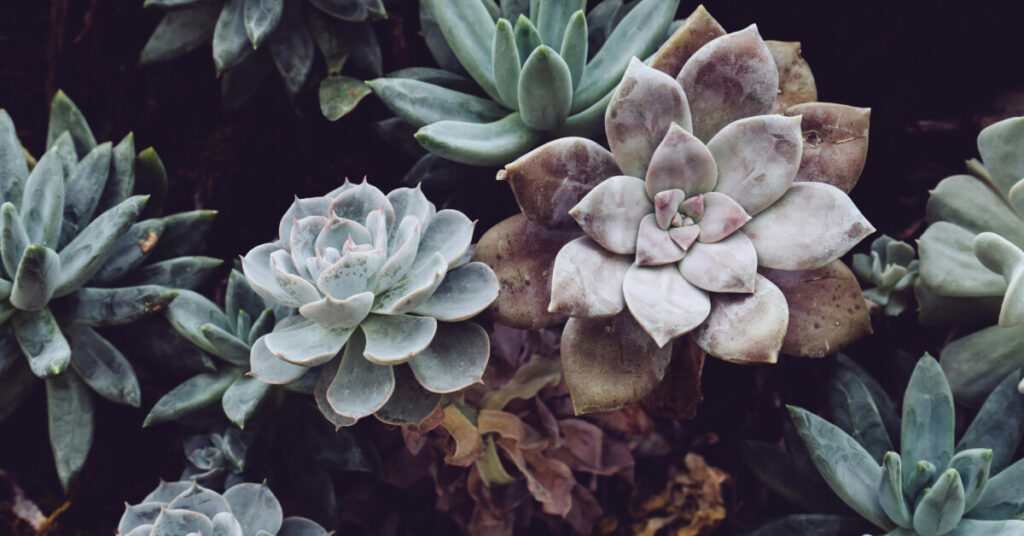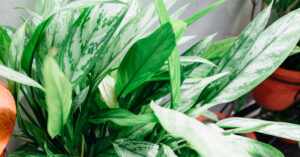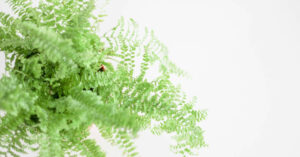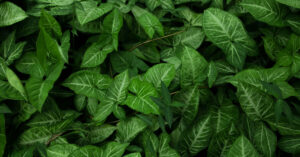Echeveria spp.
Echeveria stands as one of the most beloved and recognizable succulents, captivating plant enthusiasts with its perfect geometric rosettes and stunning array of colors. This Mexican native brings desert elegance indoors while remaining surprisingly forgiving for beginners, making it an essential addition to any plant collection.
Why Echeveria Deserves a Place in Your Home
Native to the rocky, mountainous regions of Mexico and Central America, Echeveria has become a symbol of sculptural beauty in homes worldwide. Its thick, fleshy leaves form perfect spirals that seem almost too symmetrical to be real, creating living art that complements both modern and traditional décor. The plant’s compact rosette form ranges from pale blue-green to deep burgundy, with many varieties displaying stunning color transitions from leaf center to edge.
What makes Echeveria truly special is its remarkable diversity and resilience. With over 150 species and countless cultivars available, collectors can build entire gardens featuring different colors, textures, and sizes while maintaining the same simple care routine. These plants also reward good care with delicate flower spikes that emerge from the center of the rosette, typically in spring, adding another layer of seasonal beauty.
Beyond its aesthetic appeal, Echeveria offers the satisfaction of easy propagation—a single leaf can grow into a new plant, making it perfect for sharing with friends or expanding your collection. Its drought tolerance and low maintenance requirements make it ideal for busy lifestyles, frequent travelers, or anyone seeking the beauty of houseplants without demanding care schedules.
Care Requirements
Light Requirements
Full sun to bright indirect light
Echeveria thrives in bright, direct sunlight and requires at least 6 hours of bright light daily to maintain its compact form and vibrant colors. Place your plant in a south-facing window where it can receive maximum light exposure. Without adequate light, your Echeveria will stretch toward the light source, losing its tight rosette shape and becoming leggy—a process called etiolation.
During summer months, you can move your plant outdoors to a sunny location, but introduce it gradually to prevent sunburn. Start with morning sun and gradually increase exposure over a week. If you notice your plant’s colors fading or it’s becoming elongated, increase light exposure immediately.
Watering
Light frequency – soak and dry method
The key to successful Echeveria care is the “soak and dry” watering method. Water thoroughly until water drains from the bottom holes, then allow the soil to dry completely before watering again. This typically means watering every 7-14 days during the growing season, depending on your home’s humidity and temperature.
Always water at the base of the plant, avoiding the leaves and center rosette. Water trapped in the crown can lead to rot, which is often fatal. Use room temperature water and never allow the plant to sit in standing water. During winter, reduce watering frequency significantly as the plant enters dormancy.
Soil Type
Well-draining cactus/succulent potting mix
Echeveria demands fast-draining soil that prevents water from sitting around the roots. Use a commercial cactus and succulent potting mix, or create your own by combining regular potting soil with perlite and coarse sand in equal parts. The soil should drain within minutes of watering.
Always choose pots with drainage holes—this cannot be overstated. Terra cotta pots are ideal as they allow excess moisture to evaporate through the walls and provide good air circulation to the roots.
Temperature
65-75°F (18-24°C) growing season, 50-60°F (10-15°C) winter
Echeveria prefers warm temperatures during its active growing period but can tolerate cooler conditions during winter dormancy. Protect from temperatures below 40°F (4°C), which can cause severe damage or death. Keep your plant away from cold drafts, air conditioning vents, and heating sources that create temperature fluctuations.
Humidity
Low
Unlike many houseplants, Echeveria actually prefers low humidity environments. Average household humidity (30-50%) is perfect. Avoid placing it in bathrooms or other high-humidity areas, as this can lead to fungal problems and rot. Good air circulation around the plant helps prevent moisture-related issues.
Fertilizing
Light feeding during growing season
Echeveria has minimal fertilizer needs. During spring and summer, apply a diluted liquid fertilizer (quarter strength) once monthly. Use a balanced fertilizer with equal NPK ratios, avoiding high-nitrogen fertilizers that can cause soft, weak growth. Stop fertilizing completely in fall and winter when the plant enters dormancy.
Seasonal Care Adjustments
Spring/Summer (Growing Season):
- Water every 7-14 days when soil is completely dry
- Provide maximum bright light exposure
- Monthly light fertilizing
- Monitor for new growth and flower spikes
- Best time for repotting and propagation
Fall/Winter (Dormant Period):
- Reduce watering to every 3-4 weeks
- Stop fertilizing completely
- Protect from cold drafts and temperature drops
- Growth slows significantly—this is normal
- Some varieties may show enhanced colors in cooler conditions
Mature Size and Flowering
Echeveria varieties range from compact 2-inch specimens perfect for small containers to impressive 12-inch rosettes that command attention. Most varieties reach their mature size within 2-3 years, with some continuing to grow slowly for many years. The plant’s form becomes more beautiful with age as it develops a thick stem and produces offsets around the base.
Under optimal conditions, mature Echeveria plants produce spectacular flower spikes in late winter to early spring. These tall, arching stems bear small, bell-shaped flowers in colors ranging from pink and orange to yellow and red. While the flowers are beautiful, some growers remove the flower stalks to preserve the plant’s energy for foliage growth, as flowering can sometimes weaken the main rosette.
Difficulty Level
Easy
Echeveria ranks among the most forgiving houseplants, making it perfect for beginners, busy professionals, or anyone new to succulent care. The plant provides clear visual cues about its needs—healthy plants have thick, plump leaves with vibrant colors, while stressed plants show thin, pale, or wrinkled foliage.
Pet and Child Safety
Echeveria is generally considered non-toxic to pets and children, making it one of the safer houseplant choices for families. However, as with any plant, it’s best to prevent pets and small children from chewing on the leaves, which could cause mild stomach upset. The plant’s thick, waxy leaves are also naturally unappealing to most pets.
Varieties to Consider
The world of Echeveria offers endless collecting opportunities, with new cultivars constantly being developed. Popular varieties include:
- Echeveria ‘Perle von Nürnberg’: Purple-pink rosettes with powdery coating
- Echeveria ‘Black Prince’: Deep burgundy to black leaves with stunning contrast
- Echeveria ‘Lola’: Perfect rosette form with pastel blue-green and pink hues
- Echeveria agavoides: Red-tipped leaves resembling small agave plants
- Echeveria ‘Blue Atoll’: Compact with blue-green leaves and coral edges
Plants That Pair Well with Echeveria
Echeveria’s architectural form and low-maintenance nature make it an excellent companion for other drought-tolerant plants. Group it with plants that share similar light and watering requirements for easy care routines and stunning displays.
Perfect Companions:
- Jade Plant (Crassula ovata) – Similar watering schedule and light needs
- Haworthia varieties – Complementary rosette forms with different textures
- String of Pearls – Trailing growth provides beautiful contrast
- Aloe varieties – Shared succulent care requirements
- Snake Plant – Different form but similar low-maintenance needs
Succulent Collections:
Create stunning succulent gardens by combining different Echeveria varieties with other rosette-forming succulents, small cacti, and trailing species. These combinations work beautifully in shallow, wide containers and create striking textural contrasts while maintaining the same care routine.
Common Problems and Solutions
Overwatering
Symptoms: Soft, mushy leaves; yellowing; black rot at base; plant collapse Solution: Reduce watering frequency immediately, improve drainage, repot if roots are damaged, remove affected leaves
Underwatering
Symptoms: Thin, wrinkled leaves; bottom leaves shrivel; stunted growth Solution: Water thoroughly and establish a more consistent watering schedule
Insufficient Light
Symptoms: Stretching between leaves; pale colors; weak, elongated growth Solution: Move to brighter location; supplement with grow lights if necessary
Pest Issues
Symptoms: Mealybugs, scale insects, aphids appearing as white cottony masses Solution: Inspect regularly; treat with rubbing alcohol on cotton swabs or insecticidal soap
Propagation
Echeveria offers multiple propagation methods, making it easy to expand your collection or share with friends:
Leaf Propagation:
- Gently twist off healthy leaves from the base
- Allow cut end to callus for 2-3 days
- Place on top of dry succulent soil
- Mist lightly once roots and new growth appear
- New plants develop in 4-8 weeks
Offset Division:
- Remove offsets (baby plants) from around the base
- Allow cut surfaces to dry for 24 hours
- Plant in well-draining soil
- Wait one week before first watering
Beheading:
- Cut the main rosette leaving 1-2 inches of stem
- Allow cut to dry for several days
- Plant in well-draining soil
- Original stem often produces new offsets
Your Gateway to Succulent Success
Echeveria represents the perfect introduction to the world of succulents, combining stunning beauty with remarkably easy care. Its sculptural form and diverse varieties offer endless collecting opportunities while its forgiving nature ensures success for beginners and experienced growers alike.
Whether you start with a single plant or dive into collecting multiple varieties, Echeveria provides the satisfaction of growing living art that requires minimal effort while delivering maximum visual impact. Few plants offer such a winning combination of beauty, ease, and propagation potential—making Echeveria a true cornerstone of successful indoor gardening.




